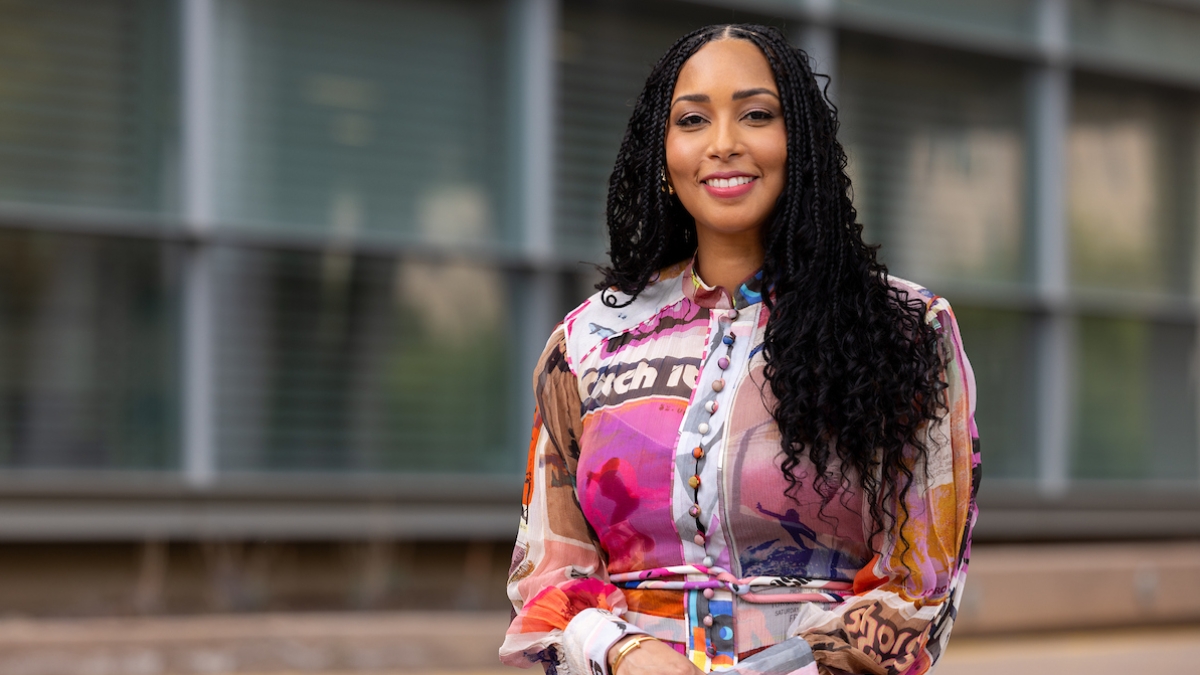#OscarsSoDiverse? In Q&A, ASU professor discusses inclusiveness in Hollywood
ASU professor Donald Guillory examines state of industry after Academy Awards create distance from #OscarsSoWhite

It was clear from the start what the 89th Academy Awards would be all about Sunday night: diversity, inclusiveness and distance from the #OscarsSoWhite criticisms that have dogged the Hollywood establishment.
“Remember last year when it seemed like the Oscars were racist?” host Jimmy Kimmel joked in the opening monologue.
This year, 18 minorities were nominated. Mahershala Ali of “Moonlight” won for best supporting actor, becoming the first Muslim actor to win an Oscar. He also was part of a landmark night for African-Americans, with Viola Davis of “Fences” winning for best supporting actress, and Barry Jenkins’ “Moonlight” winning best picture and Ezra Edelman’s “O.J.: Made in America” winning best documentary.
But has Hollywood turned a corner? Or was this just an attempt to make sure criticism along racial lines didn’t steal the show for the third year in a row? To try to find out, ASU Now spoke with Donald Guillory, a history instructor in the College of Integrative Sciences and Arts, affiliate faculty of the Center for the Study of Race and Democracy, and the author of "The Token Black Guide: Navigations Through Race in America."
Question: Was the #OscarsSoWhite social media campaign a legitimate complaint?
Answer: Yes, it was. It wasn’t so much the response from social media, but the people in Hollywood as to the reasons why actors of color — not just African-American actors, Asian-Americans, black Brits, Hispanics, Native Americans, and Pacific Islanders — as to why there’s a lack of presence.
There was this sense of absence in regards to casting, which really struck a nerve with actors, writers, producers and so forth.
The excuses that were given with respect to casting for big-budget films were, “It’s not going to sell if we add more diversity or are more inclusive with it. If we send it to China, the Chinese aren’t going to want to see this film.” As opposed to thinking about it, processing it and doing something. People who did not understand the context of the complaints pushed the blame on the Chinese market and those funding the films, “Well, it’s not our fault. These are the people who are going to buy and support the film.”
If you have a film that features diverse actors and people of diverse backgrounds, audiences get a greater sense of what America and the world actually look like.
You want to have people recognized for their talent and have those stories available to be seen and dispel the caricatures, generalizations, misrepresentations and misconceptions in the public space.
This past year’s films have demonstrated a bit more diversity and inclusion.
Q: How does one change the culture in Hollywood to become more inclusive?
A: With the Academy of Arts and Sciences, it comes down to who is their membership? The membership and the voting committee decide on who’s going to be nominated. The statistic that they gave last year was that around 60 to 65 percent of the Academy were white males, which is startling.
With regard to people of color, male and female, the representation is about 10 to 11 percent. When you have that underrepresentation or disproportionate representation statistically, you leave a lot of people out.
The BAFTAS, the British version of the Oscars, made a requirement that by 2019, they will not consider any films for awards if they are not diverse with respect to actors, writers, directors and crew members. It was a very bold statement by them and was almost a way for them to avoid the issue that the Oscars were facing.
Q: Racial demographics will radically change in the U.S. over the next half-century. Will this issue go away with time?
A: It’s hard to say. Consider that there was almost a 40-year period between Sidney Poitier winning an Oscar for the 1963 film “Lilies of the Field,” and Denzel Washington winning for 2001’s “Training Day.” Halle Berry was the first black female to win the Best Actress award (for 2001’s “Monster's Ball”). She was only the seventh black woman to be nominated for the award.
I don’t think it’s a situation where someone has been singled out because they were going to win for their race, but it’s indicative of how things are being cast, how the stories are told, the films being made and that peoples’ stories are being left out.
I don’t believe there’s ever been an Asian actor who has ever won, much less nominated. It goes beyond just white and black with film representation or even being included. When we start talking about different people, ethnicity, nationality — it’s an issue of including a lot more people.
Q: Four films with diverse casts — “Hidden Figures,” “Fences,” “Lion” and “Moonlight” — were nominated for best picture. Is this coincidence or a direct result of #OscarsSoWhite?
A: I’m going to argue that it’s a coincidence because those films themselves were either already written or already in the works before the controversy started two years ago.
What we will see in the next few years is that there will be more attention and coordination with studios on those smaller independent projects like “Moonlight” and “Fences,” where they might not be box-office blockbusters, but they’ll do well enough for more interest to grow.
Hopefully in the future they’ll be making black stories, brown stories, Asian stories, even Native American stories, a group we hardly ever talk about or see represented on film. There’s definitely going to be a lot more interest in it, either out of pure curiosity to tell these stories or disdain at seeing the same thing over and over again.
Q: Jimmy Kimmel's take on race and diversity seemed to address the situation in a clever way. How powerful is comedy in this situation?
Comedy is a great unifier. Comedian and columnist Ray Hanania once stated that if we can all laugh together, we can all live together. Laughter is something that brings people together despite their differences. We can polk fun at our faults. We can make fun of ourselves. We can find humor in absurdities that we face each day. It is essential that we laugh at our pain. That is part of healing. We still require action in order to get past whatever obstacles we face, but it is one step in the process.
Q: Who delivered the most powerful message of the evening and why?
A: There were several throughout the night that spoke out against racism, xenophobia or the current political climate. For me, one of the most powerful and touching moments came from "Moonlight’s" Tarell Alvin McCraney who dedicated his win for adapted screenplay to "all those black and brown boys and girls and nongender conforming who don’t see themselves, we’re trying to show you, you and us.”
He got at the heart of the issue with the controversy and problem with Hollywood. There is a need for greater inclusion and stories that demonstrate the commonalities and universal qualities that exist in spite of race, gender, gender identity, religion, nationality, etc. The more films that we have which embrace this idea, the more we are able to achieve not just diversity, but inclusion. We will have art more representative of the society in which we live and the people we see, work with, are related to. We will see humanity.
Q: Where do we go from here?
A: There is still much work to be done. There are a number of minority groups, LGBTQ community, disabled and others who are still not fully or accurately represented in popular culture. Having more people of color and from other marginalized groups in the writing rooms and casting will allow for these stories to become more visible and present. It is essential that schools start incorporating more diverse literature and plays in order to plant the seed to desire more stories that reflect real life, real people and real struggles, accomplishments and interactions.
Moviegoers also shouldn’t be hesitant to see films featuring people who “don’t look like them” because they feel as though they couldn’t relate to the characters in the films. The prejudice and bias that we all have needs to be curbed in order to view and enjoy films offering stories about people of different backgrounds, cultures, sexual orientations, languages and religions. As long as we avoid seeing these films when they are presented, the longer it is going to take Hollywood to produce films that are more reflective of America and the world.
More Arts, humanities and education

'Devils in the Metal': ASU vet leads iron cast workshop for former service members
Bruce Ward believes everyone has a symbol of strength or resilience, and they have an obligation to find it. His happens to be a paper crane in an ocean wave. “It’s the idea that we are the…

ASU English professor wins Guggenheim Fellowship for poetry
The awards — and opportunities — keep piling up for Safiya Sinclair, an associate professor in Arizona State University’s Department of English. In mid-April, Sinclair received one of 188 Guggenheim…

Designer behind ASU’s brand named newest Herberger Institute Professor
Bruce Mau, co-founder and CEO of the Chicago-based holistic design consultancy Massive Change Network, has joined Arizona State University’s Herberger Institute for Design and the Arts as its newest…